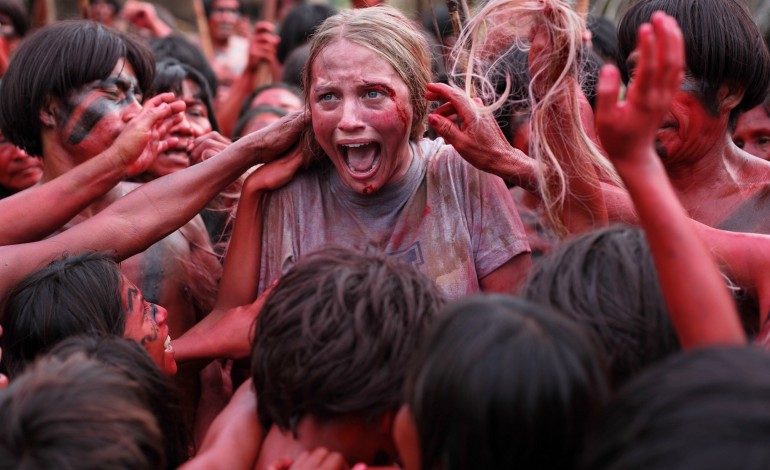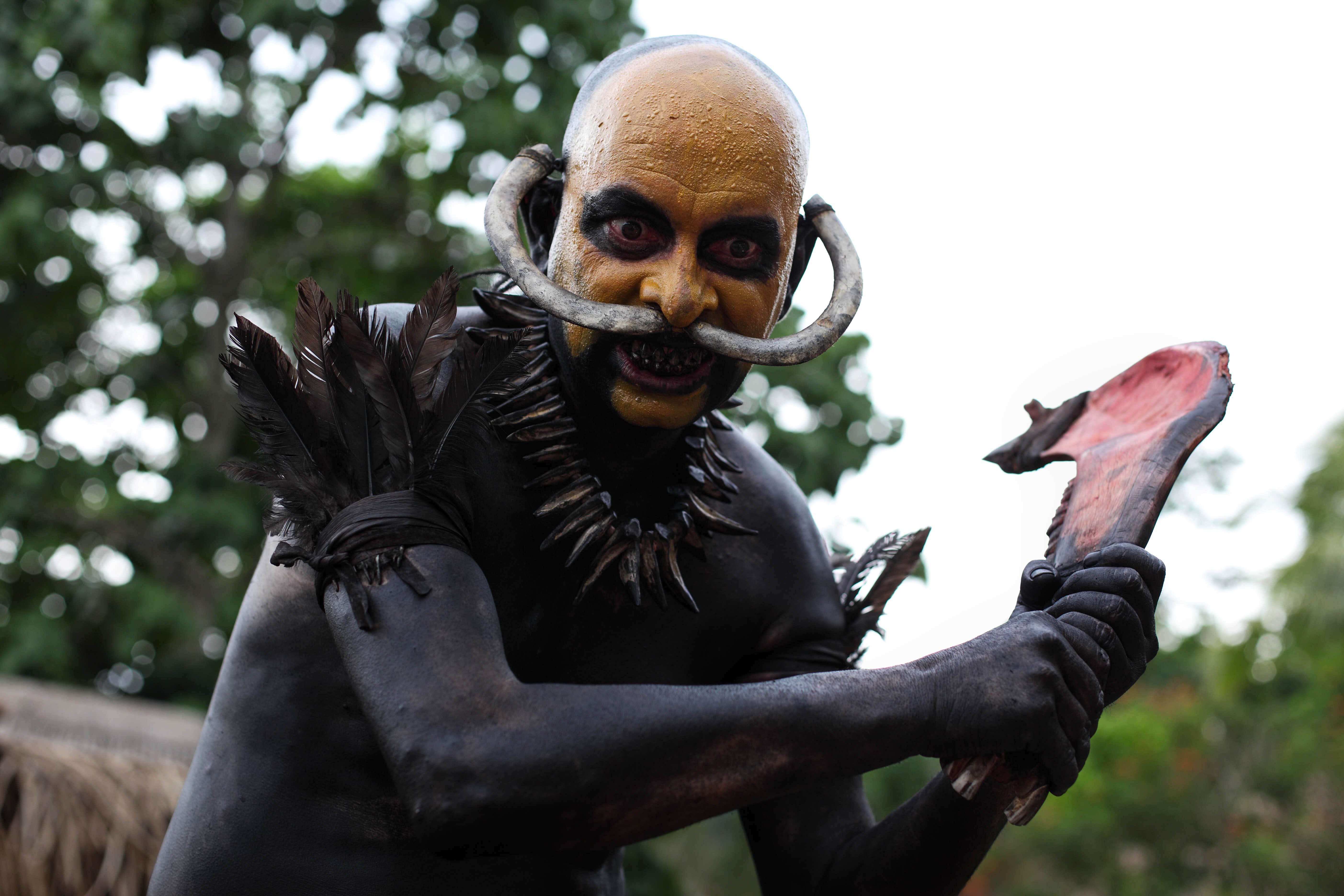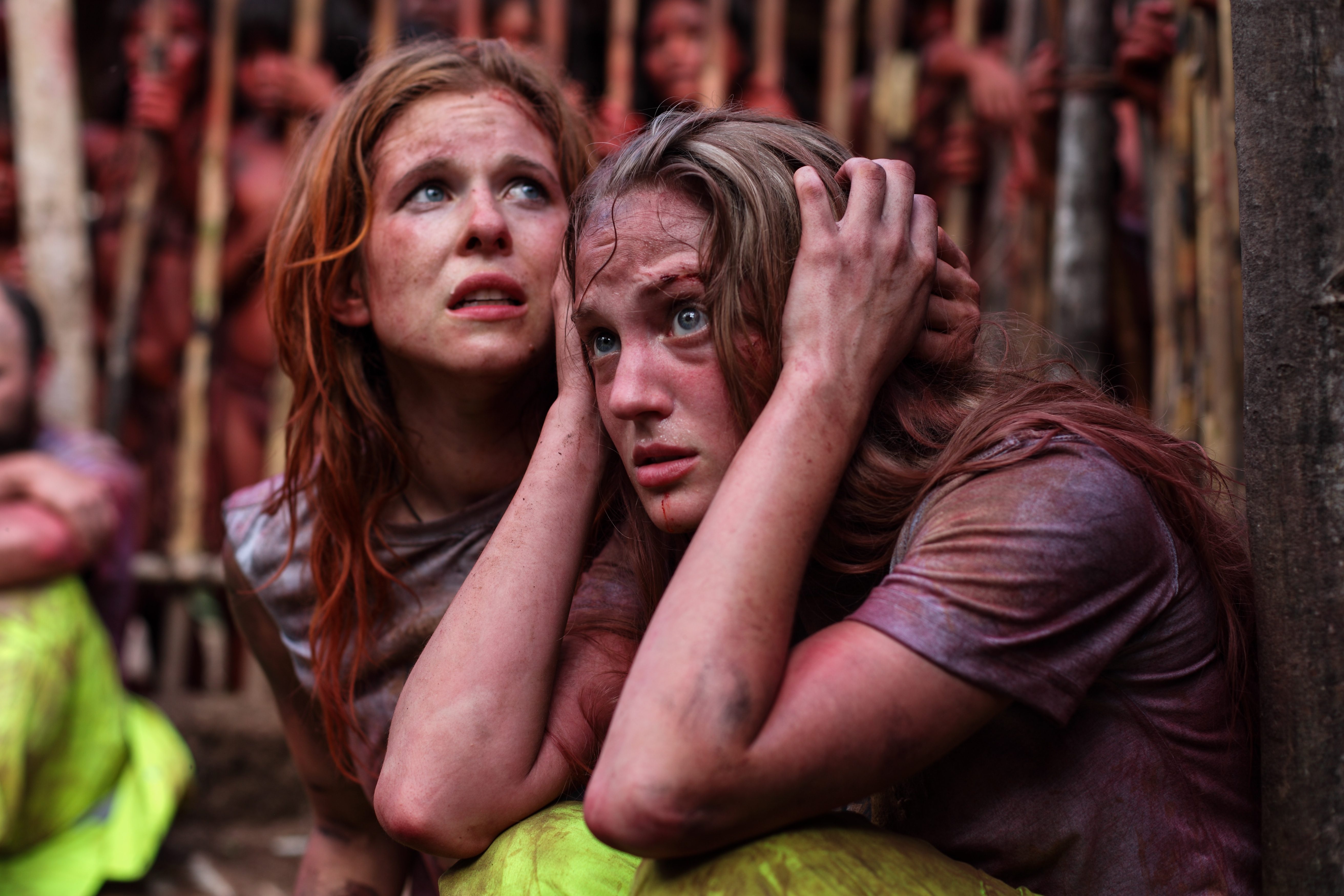

The cannibal subgenre is a small, colorful and particularly nasty one that had its heyday back in the early 80’s after Ruggero Deodato’s infamous Cannibal Holocaust gained notoriety for getting its director arrested on suspicion that the murders in his film were real. These are gritty and self-reflexively distasteful films, filed predominantly under the ‘You could never make this today’ class of filmmaking. They delighted in excessive gore and occasionally provided dark and unsettling, if obvious social commentary. So it should be clear for anyone with any knowledge of Eli Roth’s filmography that it’s the perfect genre for the director’s return to the big screen.
The Green Inferno is Eli Roth’s first film since Hostel II, the controversial and divisive sequel to the controversial and divisive film Hostel, which many critics site as the birth of the subgenre ‘torture porn’. The film follows Justine (Lorenza Izzo), a college freshman who falls in with a group of naïve activists lead by Alejandro (Ariel Levy) who journey into the Amazon to save a secluded tribe from the threat of deforestation. After a brief standoff with corporate security forces, broadcasted over social media to make sure the issue goes viral, the group find themselves back on a plane to civilization. Things go south quickly when the plane goes down in the jungle and the survivors quickly find themselves imprisoned by the very natives they were trying to save. If all that seems a little light on graphic cannibal violence, don’t worry, because the second half of Green Inferno sees Roth do what he does best- exhibiting an almost child-like glee at all the ways human bodies can be sliced, stabbed, and pulled apart.
Your experience of The Green Inferno will depend heavily on your familiarity with the nasty little cannibal subgenre. For the uninitiated, the film will be a gut-wrenching, white-knuckled adventure. If this isn’t your first rodeo, this journey into hell might feel like something of a pulled punch. The Green Inferno might be graphic, even stomach-churning at times, but its violence is never entirely in bad taste (pardon the pun). Cannibal Holocaust sold itself with taglines like ‘Can a film go too far?’ and ‘The one that goes all the way!’. Roth’s film is certainly violent, but he abstains from some of the more vile spectacles that made those earlier films infamous. The standard animal torture and violence is blissfully skipped and the sexual danger is kept veiled. Roth also forgoes framing The Green Inferno as a found footage film, which gave Cannibal Holocaust an unsettling sense of realism. Whether the film goes too far is going to be a matter of personal taste (again, pardon the pun), but it’s definitely not a film that goes ‘all the way’.
It’s perhaps easiest to think of The Green Inferno, not as a cannibal movie, but as an Eli Roth movie that features cannibals. Most, if not all, his directorial signatures are present, most out of place of which might be his pitch-black sense of humor. Most prominent in his breakout film Cabin Fever, Roth has always balanced humor and dread with particular panache. That humor returns here, and while it provides what might be welcome relief from the dread, it feels out of place. Roth is pulling some intense tonal acrobatics and doesn’t always stick the landing, most notably when the students stuff a dead girl with pot to incapacitate the tribe, only to have them come down with the munchies.
Roth has always been a more intelligent filmmaker than his critics give him credit for. Cabin Fever is one of the few horror films with characters that act halfway rationally, and Hostel has some interesting things to say about the objectification and monetization of the human body. The Green Inferno presents itself as a harsh criticism of slacktivist culture and first world hubris. Despite some interesting groundwork, the film has difficulty coalescing any clear political or sociological points.
While the film gives us a vague notion of the tribe’s social structure, it fails to give the natives enough dimension to provide context to their ritual slaughter. At times this feels intentional, even demonstrative of the slacktivists complete lack of cultural understanding. The film very nearly sells the cannibal horror as a product of radically different cultural and moral norms, which would have added a subversive human quality to the tribe. Then in the final act suggests that some of the villagers know their behavior might be malicious. It’s a fumble that undercuts some interesting groundwork and reduces the natives to a class that is wholly ‘other’.
It doesn’t help that none of Eli Roth’s actors seem to be in on the joke. Lorenza Izzo leads a cast of relative unknowns, and while she excels in the wide-eyed terror department, she can’t quite carry the film’s political agenda. Not that she should have to. That should call on Ariel Levy’s shoulders; unfortunately he delivers charismatic speeches as though he were reading the back of a takeout menu, or a more likely a script. Levy is meant to do a lot of heavy lifting throughout the film- his character’s arc is one of the more interesting ones-, but he simply can’t take the weight. The cast is rounded out with some pleasantly familiar archetypes, but its no secret that they’re just fodder for the killing machine (again, pardon the pun).
Verdict: 3 out of 5
The Green Inferno is not a film that is going to appeal to a wide audience. However, for a film that’s playing to such a niche crowd, it could be argued The Green Inferno doesn’t go far enough. It’s one of the tamer entries in a genre that has been virtually dead for nearly three decades. Dialed back on the more distasteful (last pun I promise) aspects of the subgenre, The Green Inferno is actually more enjoyable to watch than most in the canon. On its own merits, The Green Inferno is a visceral return to the big screen for Eli Roth and while it doesn’t quite land all the punches it throws, it still packs a wallop.



